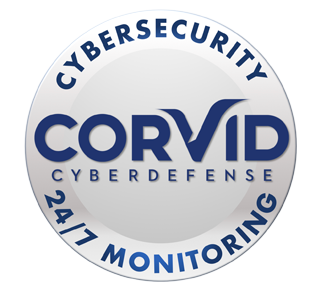 Currently, there are two popular Individual Retirement Accounts (IRAs) vying for your attention: the traditional IRA and the Roth IRA. While both are long-term savings vehicles with tax benefits, each has different rules concerning contributions, age, and income that may change from one year to the next.
Currently, there are two popular Individual Retirement Accounts (IRAs) vying for your attention: the traditional IRA and the Roth IRA. While both are long-term savings vehicles with tax benefits, each has different rules concerning contributions, age, and income that may change from one year to the next.
Contributions
Perhaps the biggest difference between traditional IRAs and Roth IRAs is how and when taxes apply to the contributions and earnings. Contributions to traditional IRAs can be pre-tax (deductible on the taxpayer’s income tax return). Although contributions and earnings accumulate on a tax-deferred basis, income taxes are due when IRA distributions are taken and become penalty free after age 59 ½.
On the other hand, contributions to Roth IRAs are made with after-tax dollars, and contributions and earnings accumulate tax free. No income tax or penalty is due when distributions are taken from a Roth IRA after age 59 ½ and meet the 5-year rule.
For tax year 2021, the combined maximum contribution to a traditional IRA or Roth IRA is $6,000 ($7,000 for individuals age 50 or older).
Age Restrictions
Contributions to traditional IRAs may be made at any age. Required minimum distributions (RMDs) must begin by April 1 of the year after an individual reaches age 72 (or a considerable tax penalty may apply). Roth IRAs have neither an age limit for contributions nor minimum distribution requirements. However, both traditional and Roth IRAs have a minimum age for distributions: 59½. Distributions taken prior to age 59½ may be subject to a 10% Federal income tax penalty (there are several exceptions to this penalty).
Certain situations qualify as exceptions to the penalty, such as distributions to pay first-time-homebuyer expenses or qualified education expenses. Furthermore, before tax-free distributions can be received from the appreciation of a Roth IRA, the account must be five years old.
Income Eligibility Limits
Depending on your tax-filing status, your income, and your participation, or lack thereof, in a qualified employer-sponsored retirement plan, you may be eligible to take an income tax deduction for contributions to a traditional IRA. If you are a single taxpayer, do not participate in a qualified employer-sponsored plan, and earn a minimum of $6,000, contributions are deductible regardless of your adjusted gross income (AGI). However, if you do participate in an employer-sponsored retirement plan, income limitations apply. Deductions in 2021 phase out for single filers with modified AGIs (MAGIs) between $66,000 and $76,000, and for married couple joint filers with MAGIs between $105,000 and $125,000.
The income eligibility requirements are different for Roth IRAs. If you participate in a qualified employer-sponsored retirement plan, you may contribute to a Roth IRA; however, if you are also contributing to a traditional IRA, your contributions may not exceed the annual contribution limits. You are eligible to make a full contribution to a Roth IRA if your MAGI in 2021 does not exceed $125,000 for single filers or $198,000 for married joint filers (contributions phase out for single filers with MAGIs between $125,000 and $140,000, and for married joint filers with MAGIs between $198,000 and $208,000). For a married individual, filing separately, who participates in a workplace retirement plan, the phase-out range is $1 to $10,000.
A Roth IRA is often a favored choice for those who participate in a qualified employer-sponsored retirement plan and exceed the income limits for a deductible IRA, but meet the income eligibility requirements for a Roth IRA.
Analyze This
As you investigate which IRA – or combination of IRAs – offers you the best bottom line, you may want to consider the following questions:
- What tax benefits, current and long-term, are available to you?
- When do you anticipate needing your IRA proceeds?
An analysis of your personal financial situation and retirement objectives with a qualified financial professional can help you develop a financial strategy to meet your specific needs. Scrutinizing the details now may save you time and money in the future.
- Copyright © 2022 FMeX. All rights reserved. Distributed by Financial Media Exchange





















 Megan Jones joined the ILG Financial team in 2020 as marketing director. Megan and her husband live in Fredericksburg, VA with their German Short Haired Pointer, Gus. Megan is a graduate of Longwood University and holds a degree in communications. Megan is the oldest of Dave Lopez’s three children and not only enjoys working alongside her father, but also with her cousin, Chase, who joined the ILG Financial team in 2020 as an advisor. Megan is also a fully licensed Life, Health, and Annuity agent. When not at work, Megan enjoys sitting on the back porch with family and friends enjoying food and music.
Megan Jones joined the ILG Financial team in 2020 as marketing director. Megan and her husband live in Fredericksburg, VA with their German Short Haired Pointer, Gus. Megan is a graduate of Longwood University and holds a degree in communications. Megan is the oldest of Dave Lopez’s three children and not only enjoys working alongside her father, but also with her cousin, Chase, who joined the ILG Financial team in 2020 as an advisor. Megan is also a fully licensed Life, Health, and Annuity agent. When not at work, Megan enjoys sitting on the back porch with family and friends enjoying food and music. Chase Lopez joined the ILG Financial team in 2020 as an advisor. Chase is a 2016 James Madison University graduate with a degree in management. Chase has been trained under the tutelage of Dave Lopez, who is not only the founder and managing member of ILG Financial, but also is Chase’s uncle and godfather. He also enjoys working alongside his cousin, Megan, who is Dave’s daughter.
Chase Lopez joined the ILG Financial team in 2020 as an advisor. Chase is a 2016 James Madison University graduate with a degree in management. Chase has been trained under the tutelage of Dave Lopez, who is not only the founder and managing member of ILG Financial, but also is Chase’s uncle and godfather. He also enjoys working alongside his cousin, Megan, who is Dave’s daughter. Amy Anderson joined the ILG Financial team in 2023 as the client relations coordinator. Her responsibilities include scheduling of appointments, annual check-up notifications, and annuity and required minimum distribution assistance. She is a graduate of Harding University with a degree in Computer Information Systems. Amy and her husband have two children and she enjoys reading, crocheting, music and spending time with her family.
Amy Anderson joined the ILG Financial team in 2023 as the client relations coordinator. Her responsibilities include scheduling of appointments, annual check-up notifications, and annuity and required minimum distribution assistance. She is a graduate of Harding University with a degree in Computer Information Systems. Amy and her husband have two children and she enjoys reading, crocheting, music and spending time with her family. Jessica Carson joined the ILG Financial team in 2018 as an agent. Jessica and her husband have four children, two dogs, 3 barn cats, 5 chickens, and three parakeets. She indeed loves her children and pets! When not at work, Jessica enjoys playing the piano and cello as well as traveling and spending time outside with her family, hiking, fishing, and boating.
Jessica Carson joined the ILG Financial team in 2018 as an agent. Jessica and her husband have four children, two dogs, 3 barn cats, 5 chickens, and three parakeets. She indeed loves her children and pets! When not at work, Jessica enjoys playing the piano and cello as well as traveling and spending time outside with her family, hiking, fishing, and boating. Terri Center joined the ILG Financial team in 2019 as client services manager. She handles client records, application processing, and gathering information to provide a professional and friendly experience with all of our clients. Terri is a graduate of Oakland University. She is married and has two children. She enjoys hiking, family time, and puzzle challenging video games. She also likes to share her creativity in her canvas paintings and sewing projects.
Terri Center joined the ILG Financial team in 2019 as client services manager. She handles client records, application processing, and gathering information to provide a professional and friendly experience with all of our clients. Terri is a graduate of Oakland University. She is married and has two children. She enjoys hiking, family time, and puzzle challenging video games. She also likes to share her creativity in her canvas paintings and sewing projects.